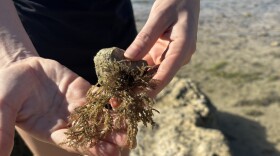As 2019's hurricane season comes to a close, weather experts say it was an average year for the Central Pacific basin.
The National Weather Service says the summer months started with an El Niño event, and the agency expected it to last through the fall. That caused experts earlier this year to predict a 70% chance for an above-average season -- or between 5 to 8 named hurricanes.
But waters near the equator cooled rapidly in the early summer months -- shifting conditions to a neutral state, resulting in only five named storms this year.
"The 2019 hurricane season was near average. It was a lot quieter than we saw last year," said John Bravender, warning coordination meterologist with the National Weather Service.
The first tropical cyclone of the season was Hurricane Erick, which became a Category 4 on July 30 and steadily weakened. Erick eventually passed far south of the main Hawaiian Islands. Tropical Storm Flossie followed Erick, but dissipated before reaching the islands. The season would then produce Tropical Storm Akoni and Ema, and Tropical Depression Kiko.
The only impacts on the state came came from Tropical Cyclone Barbara, which dissipated before entering the Central Pacific basin. Barbara created high surf along east facing shores of the state, and heavy rain across Maui County and Hawaii Island. While Erick and Flossie generated high surf and heavy rain for portions of the state.
Bravender says the 2019 season outlook, which was issued on May 22, was created based on information forecasters had at the time. And it's difficult to accurately predict weather events and conditions over the span of months.
"It's difficult enough to look out five to seven days for the weather," said John Bravender. "When you're looking multi-months, we're still working on that a lot."
Bravender says while the possibility of hurricanes has eased, residents should be prepared for weather disasters year-round.
"It may sound a bit cliché, but it only takes one," he said.




